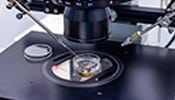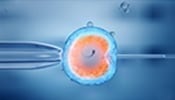Conceiving with Medical Assistance
It has been said that if the sexuality of men were as complex as that of women, humanity would become extinct. In regard to reproduction, the contribution of women seems amazingly simple, because all of their egg follicles are already present in the body before birth. At the beginning of each cycle, about 30 to 40 egg cells stand at the ready, but only one will mature. In contrast, a man’s sperm cells are produced anew during various processes over the course of ten to twelve weeks.
In cases of infertility, if medical measures are necessary, they do target the woman to a special extent. In Vitro Fertilization (IVF) or Intrauterine Insemination (IUI) are the two most commonly used treatments in fertility clinic around the world. Treatments that may last several years, and the necessary hormone injections could lead to mood swings, weight gain, edema or even an increased risk of cardiac infarction. Additionally, any surgical removal of the eggs themselves is associated with a risk of injury or infection.
The Role of the Reproductive Physician
When encountering fertility problems, initial discussions with the gynecologist will probably result in a referral to a reproduction endocrinologist with special training in the areas of infertility and fertility treatment for both women and men. At that point, an array of test procedures such as chromosome investigation or diagnosis of serious hereditary diseases are available.
For example, with men, determining the azoospermia factor indicates whether the production of mature sperm can be expected. Andrologists are urologists who specialize in treating male infertility. They analyze the sperm’s characteristics, and will possibly do a biopsy or extract sperm cells. Their findings also help decide whether pregnancy may be achieved without artificial fertilization, and if not, which procedure is worth considering. Andrologists also offer help for couples who cannot successfully be intimate due to a medical condition or premature ejaculation.









